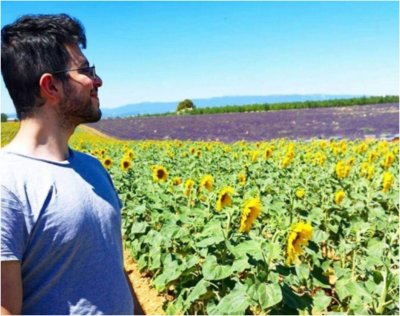Furfural Manufacture from Xylose: Routes towards High Selectivity and Novel Processes
Due to the COVID-19 crisis the PhD defence of Luca Ricciardi will take place (partly) online.
The PhD defence can be followed by a live stream.
Luca Ricciardi is a PhD student in the research group Molecular Nanofabrication (MN). His supervisors are prof.dr.ir. J. Huskens and prof.dr. J. Lange from the Faculty of Science and Technology (S&T).
 Humankind is facing a climate and an energy crisis, both of which are connected to a rise in energy demand and an excessive use of fossil energy sources (i.e., coal, natural gas and oil). To revert the consequences of this crisis, it is mandatory to compensate the growing energy demand and, concomitantly, to reduce the contributions of fossil fuels to the total energy balance, by the development of renewable sources of energy and chemicals. Biomass, and more specifically lignocellulosic biomass, is a promising renewable resource composed of various biopolymers (i.e., lignin, cellulose and hemicellulose). Different chemicals can be obtained from lignocellulosic biomass, which opens the possibility not only for the production of biofuels (e.g., bioethanol and biobased diesel), but also for redesigning chemical industry.
Humankind is facing a climate and an energy crisis, both of which are connected to a rise in energy demand and an excessive use of fossil energy sources (i.e., coal, natural gas and oil). To revert the consequences of this crisis, it is mandatory to compensate the growing energy demand and, concomitantly, to reduce the contributions of fossil fuels to the total energy balance, by the development of renewable sources of energy and chemicals. Biomass, and more specifically lignocellulosic biomass, is a promising renewable resource composed of various biopolymers (i.e., lignin, cellulose and hemicellulose). Different chemicals can be obtained from lignocellulosic biomass, which opens the possibility not only for the production of biofuels (e.g., bioethanol and biobased diesel), but also for redesigning chemical industry.
Among these bio-based chemicals, furfural is considered a valuable resource, both for its promising performance as a biofuel and for its commercially relevant derivatives. Furfural can be produced from the acid-catalyzed dehydration of xylose, which is obtained from hemicellulose, a component of lignocellulosic feedstock. Industrially, furfural is produced using mineral acids (e.g., H2SO4) as catalysts both under aqueous monophasic conditions (with xylose-to-furfural selectivities of approx. 45-50 mol%) and aqueous-organic biphasic conditions (with xylose-to-furfural selectivities of approx. 65-70 mol%). The non-ideal selectivities are due to several parallel and subsequent reactions, e.g., the degradation of xylose and furfural and the formation of insoluble by-products (humins). This thesis deals with the development of alternative approaches to the synthesis of furfural, with the aim of reaching high xylose-to-furfural selectivity in industrially relevant process concepts.
The main aim of this research project is to develop alternative approaches to the synthesis of furfural, with the goal of reaching high xylose-to-furfural selectivity in industrially relevant process concepts.
Part of the experimental work presented in this thesis entails the application of microwave heating in organic chemistry, using xylose dehydration to furfural as a case study. Traditional and microwave heating are compared to rationalize the differences between these two methods, i.e., the enhancement of the rate of chemical reactions at microwave conditions. Additionally, the development of a boronate-mediated liquid-liquid extraction of xylose opened the way for the conceptualization of industrial processes for furfural manufacture from xylose-rich hydrolysates, with xylose-to-furfural selectivities as high as 95 mol%.
In summary, the results presented in this thesis show that a deeper understanding of fundamental aspects of the behavior of different solvent systems can be developed into alternatives for the valorization of xylose-rich hydrolysates. As the xylose-to-furfural selectivity is limited by parallel and subsequent reactions, the choice of reaction conditions (i.e., solvent system, heating method, catalyst, temperature) has to be made with the aim of suppressing the side reactions and maximizing the selectivity.





